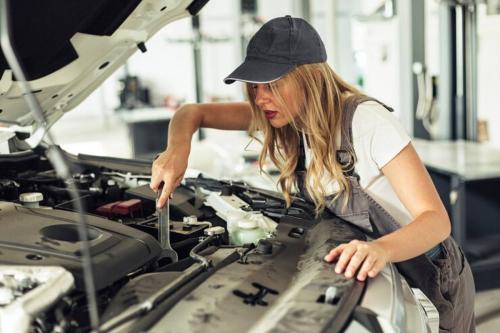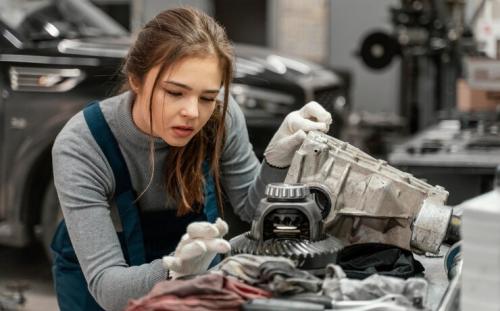Everything You Should Know About Tyre Pressure

Even though technology has contributed to the creation of high-quality, cutting-edge tyres, the air in cheap tyres is still what supports the weight of the car and allows the rubber to grip the road as best it can.
Did you know that driving a car with underinflated tyres burns more fuel, shortens tyre life, and puts you and other drivers at risk for accidents? Furthermore, it affects the ecosystem as well.
Incorrectly inflated tyres use more fuel and release more pollutants into the sky. To learn more about the importance of tyre pressure and how it affects regular driving, continue reading.
Importance of correct tyre pressure
You can manoeuvre the car more effectively and lessen the force applied to the tyres when the tyres are correctly filled. When the inflating pressure is off, though, the experience is very different. Let us examine how.
Both overinflation and underinflation are dangerous situations.
- Underinflation
Underinflation is a frequently cited cause of tyre failure. Less air causes a tyre to flex more, which leads to a soft tyre. The temperature of a soft tyre rises due to increased rolling resistance and friction. Among other things, overheating can result in uneven tyre wear, a longer stopping distance, and possibly tyre failure. Additionally, the exceptionally large footprint also increases the possibility of hydroplaning. You will also notice symptoms like poor fuel economy and heavy steering when your tyres are underinflated.
- Overinflation
Conversely, an overinflated tyre will flex less. Your tyre will get extremely hard as a result. Less traction and a harsh and bumpy ride are the results of a hard tyre. Over-inflation reduces the shock-absorbing capacity of tyres. It suggests that you are putting them at risk for cuts, punctures, or even complete failure as a result of a pothole or curb's abrupt contact, in addition to a bumpy ride.
For the optimum riding experience, it is crucial to always fill the tyres to the required pressure.

Maximum vs Operational pressure
It is not too hard to fill the pressure in your tyres. Finding out your tyre's appropriate pressure is the first thing you need to do. Two numbers represent pressure:
1. Maximum pressure
The maximum pressure is indicated by a marker on the tyre sidewall. It is not the suggested pressure; rather, it is the highest pressure that is permitted. It merely indicates the highest pressure you may apply to your tyre without endangering its structural integrity. It is therefore not recommended to fill your tyre to its maximum pressure.
2. Operational pressure
The operational pressure, which is lower than the maximum pressure, is actually what needs to be inflated into the tyre. The manufacturer of the car determines it, and it is listed on the placard that is located on the glove box, fuel door, door edge, or owner's manual.
Simple steps for checking tyre pressure
A precise air pressure gauge that has been calibrated makes it simple to check air pressure. An air gauge is a useful and reasonably priced tool for checking the tyre pressure on your car independently.
Remove the valve's cap and place the gauge on it to check the air pressure. The pressure reading will appear on the gauge. Should it differ from the one specified in your owner's handbook or placard, you may need to adjust the air pressure until it meets the required level.
After that, use the gauge to check the air pressure once more to ensure that your tyres are properly inflated. Remember to replace the cap on the valve stem at the conclusion. Inspect every tyre on your car, including the spare, if it has one.
Should the spare be of the space-saver variety, adhere to the pressure that is advised on its rim. Additionally, if you are unsure about the aforementioned process, visit the closest tyre servicing shop so that professionals may check the pressure in your tyres.
When should you check the tyre pressure?
Regardless of whether your tyres are filled with air or nitrogen, it is advised to check the air pressure regularly, or at least once a month, particularly before going on a long trip, to maximise fuel efficiency and tyre life.
Nevertheless, little air molecules still manage to get through the tyres despite normal maintenance, leading to little inflation losses. Therefore, check the tyre inflation before each drive as part of your daily pre-trip inspection.
Recall that the placard's referenced pressure is the cold inflation pressure. Because the tyres tend to heat up as they roll down the road, which increases pressure, make sure to check the pressure when the tyres are cold, that is, before commencing the ride in the morning.
Even after travelling just a short distance - roughly 1-2 miles - the tyres may begin to heat up. Because of this, a hot tyre's pressure reading seems greater. If it is higher than what is advised, the first thing to do is deflate the tyre to relieve the extra pressure.
Summary
This explains why maintaining the ideal combination of tread ride, handling, speed, and riding comfort comes from having properly inflated tyres whitby. Thus, make sure to periodically check the tyre pressure.
If you have any questions, you can also see a mechanic at your local tyre centre. The tyre professionals at the tyre facilities are available around the clock to help you maximise the performance of your tyres and get the most out of your investment.










Comments